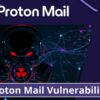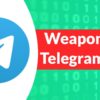When evaluating the effectiveness and reliability of service organizations, SOC (System and Organization Controls) 1 and SOC (System and Organization Controls) 2 reports play a significant role.
These reports provide assurance to customers, regulators, and stakeholders about the controls and safeguards implemented by service organizations to protect sensitive data and ensure the integrity of their operations.
While SOC 1 and SOC 2 reports focus on security and operational controls, their scope and purpose differ.
SOC 2 Type 2 certification offered by an industry leader, Perimeter81, verifies to deliver the highest security, privacy, and compliance level.
What is SOC1?
SOC1 stands for Service Organization Control 1. It is a type of attestation report that assures the internal controls of a service organization.
SOC1 reports are governed by the American Institute of Certified Public Accountants (AICPA) and are commonly used by service organizations to demonstrate their control environment to customers and stakeholders.
The SOC1 report focuses on controls relevant to the financial reporting of a service organization.
It is essential for organizations that provide outsourced services that may impact the financial statements of their customers.
These services can include payroll processing, data center operations, financial transaction processing, or other similar activities.
An independent auditor prepares the report and assesses the design and operating effectiveness of the service organization’s controls.
The auditor evaluates whether the rules are suitably designed to achieve specific control objectives and tests their operational effectiveness over a specified period.
There are Two Types of SOC1 Reports:
- SOC1 Type 1: This report assesses the design of the controls at a specific point in time. It provides an understanding of the control environment and its suitability but does not evaluate the operating effectiveness of the rules.
- SOC1 Type 2: This report assesses the controls’ design and operational efficacy over a certain period, often six to twelve months. It provides more comprehensive assurance by assessing the controls’ design, implementation, and effectiveness.
What is SOC2?
SOC2 stands for Service Organization Control 2. Like SOC1 vs SOC2 is an attestation report governed by the American Institute of Certified Public Accountants (AICPA).
However, SOC2 focuses on the controls related to a service organization’s security, availability, processing integrity, confidentiality, and privacy.
Service organizations commonly use SOC2 reports to demonstrate their adherence to industry best practices and standards for protecting customer data and ensuring the reliability of their systems and services.
These reports are significant for organizations that handle essential information, such as cloud service providers, data centers, software-as-a-service (SaaS) providers, and other service providers in the technology industry.
The SOC2 report evaluates the effectiveness of the service organization’s controls based on the Trust Services Criteria (TSC) developed by the AICPA. The TSC framework consists of five key categories:
- Security: The systems and controls in place to protect against unauthorized access, unauthorized disclosure, and potential damage to information and techniques.
- Availability: The systems and controls in place to ensure that the services are available for operation and use as agreed upon or required.
- Processing Integrity: The systems and controls in place to ensure that the organization’s processing is complete, accurate, timely, and authorized.
- Confidentiality: The systems and controls in place to protect confidential information throughout its lifecycle.
- Privacy: The procedures and processes in place for obtaining, using, maintaining, disclosing, and disposing of personal information in conformity with the organization’s privacy notice and the Generally Accepted Privacy Principles (GAPP).
Try Perimeter81 SOC2 Type 2 technical audit to establish and follow strict information security policies and procedures.
Similar to SOC1, there are two types of SOC2 reports:
- SOC2 Type 1: This report assesses the design of the controls at a specific point in time. It provides an understanding of the control environment and its suitability but does not evaluate the operating effectiveness of the controls.
- SOC2 Type 2: This report assesses the controls’ design and operational efficacy over a specific period, often six to twelve months. It provides more comprehensive assurance by assessing the controls’ design, implementation, and effectiveness.
SOC1 vs. SOC2 – The Key Difference
SOC1 and SOC2 are attestation reports governed by the American Institute of Certified Public Accountants (AICPA), but they focus on different aspects of a service organization’s controls. Here are the critical differences between SOC1 and SOC2:
- Scope of Assessment
- SOC1: Focuses on controls related to the financial reporting of a service organization. It is crucial for organizations that provide outsourced services that may impact the financial statements of their customers.
- SOC2: Controls relating to a service organization’s security, availability, processing integrity, confidentiality, and privacy are the focus. Cloud Security service providers, data centers, and software-as-a-service (SaaS) providers are among the organizations that use it.
- Control Categories
- SOC1: Evaluates controls over financial reporting, including the design and operating effectiveness of controls that are relevant to the accuracy, completeness, and reliability of financial statements.
- SOC2: Evaluates controls related to security, availability, processing integrity, confidentiality, and privacy. It assesses the design and operating effectiveness of controls to ensure the protection of customer data and the reliability of systems and services.
- Trust Services Criteria (TSC)
- SOC1: Does not explicitly use the Trust Services Criteria (TSC) framework. Instead, it focuses on control objectives specific to financial reporting.
- SOC2: Uses the TSC SOC framework, which includes the following categories: security, availability, processing integrity, confidentiality, and privacy. The TSC provides a comprehensive set of criteria for assessing controls related to these areas.
- Applicability
- SOC1: Relevant for service organizations that impact the financial reporting of their customers, such as payroll processors, financial transaction processors, and data center operators.
- SOC2: Relevant for service organizations that handle sensitive information and provide technical services, such as cloud service providers, SaaS providers, and data centers.
Furthermore, SOC1 focuses on controls related to financial reporting, while SOC2 focuses on security, availability, processing integrity, confidentiality, and privacy.
The choice between SOC1 and SOC2 depends on the nature of the organization’s services and the specific needs of its consumers and other stakeholders.
How does SOC1 vs SOC2 Helps your business
SOC 1 and SOC 2 are reports that provide assurance over different aspects of a service organization’s controls. While SOC 1 focuses on controls related to financial reporting, SOC 2 is broader and evaluates controls related to security, availability, processing integrity, confidentiality, and privacy. Here’s how each of these reports can help your business:
SOC 1:
- Meeting Customer Requirements: If your business provides services that impact your client’s financial statements, having a SOC 1 report can help meet their requirements. Many user organizations, such as financial institutions or auditors, may request a SOC 1 report to assess the effectiveness of your controls related to financial reporting. Having a SOC 1 report can provide assurance to your customers that you have appropriate controls in place to support their financial processes.
- Strengthening Customer Trust: Obtaining a SOC 1 report demonstrates your commitment to financial control and accountability. It can help build trust and confidence among your customers, showing that you take their financial interests seriously and have implemented controls to mitigate risks. This can be particularly important for businesses that handle sensitive financial information or provide critical financial services.
- Competitive Advantage: Having a SOC 1 report can give your business a competitive edge over competitors who may not have undergone such an assessment. It can serve as a differentiator, showing that you have met stringent control standards and providing evidence of your commitment to maintaining a secure and reliable financial environment.
SOC 2:
- Demonstrating Strong Security Practices: A SOC 2 report focuses on controls related to security, availability, processing integrity, confidentiality, and privacy. Obtaining a SOC 2 report demonstrates to your customers and stakeholders that you have implemented comprehensive security measures to protect their data and ensure its confidentiality, integrity, and availability.
- Meeting Customer Expectations: In today’s digital landscape, data security and privacy are paramount concerns for customers. Having a SOC 2 report can help meet customer expectations regarding the security and privacy of their data. It provides third-party validation of your security controls, giving customers peace of mind that their information is handled and protected appropriately.
- Compliance with Industry Standards: SOC 2 aligns with recognized industry standards and frameworks, such as the Trust Services Criteria developed by the AICPA. By obtaining a SOC 2 report, you demonstrate SOC2 compliance with these standards, which can be essential for businesses operating in regulated industries or those requiring adherence to specific security and privacy guidelines.
- Third-Party Risk Management: A SOC 2 report can help assess their security and privacy controls if your business relies on third-party vendors or service providers. It enables you to evaluate the risks associated with engaging with these third parties, ensuring they have implemented adequate safeguards to protect your data and meet your security requirements.
- Strengthening Internal Controls: Going through the SOC 2 assessment process can help identify gaps in your internal controls and security practices. It provides valuable feedback and insights into areas that require improvement, allowing you to enhance your security posture and strengthen your overall internal control environment.
Both SOC 1 vs SOC 2 reports provide valuable assurance to your customers and stakeholders, albeit in different areas of control.
Each report’s specific benefits and relevance depend on your business’s nature, customer requirements, and the industry you operate in.
Consider your stakeholders’ specific needs and expectations to determine which report is most applicable and beneficial for your business.
Most Important Considerations of SOC1 vs SOC2
SOC 1:
- Scope Definition: Clearly define the scope of the SOC 1 engagement, including the services, systems, and processes relevant to the user organizations’ financial reporting. Ensure the scope accurately reflects the services provided and aligns with the user organizations’ requirements.
- Control Objectives: Identify the control objectives that apply to the financial reporting of the user organizations. These objectives should address the risks that could impact the accuracy and reliability of their financial statements. It is essential to understand the control objectives and tailor the assessment accordingly thoroughly.
- Documentation and Evidence: Maintain comprehensive documentation and evidence to support the design and operating effectiveness of the assessed controls. This includes control descriptions, policies, procedures, and evidence of control execution. Robust documentation is crucial for demonstrating the implementation and effectiveness of controls.
- External Audit: Engage an independent external auditor to perform the SOC 1 assessment. The auditor should have the necessary expertise and experience in evaluating controls related to financial reporting. Ensure that the auditor follows the appropriate standards, such as the Statement on Standards for Attestation Engagements (SSAE) No. 18, to issue the SOC 1 report.
- User Organization Requirements: Understand the specific requirements of the user organizations requesting the SOC 1 report. Work closely with them to ensure the report addresses their needs and provides the necessary assurance regarding the controls that impact their financial reporting. Effective communication and collaboration with user organizations are essential.
SOC 2:
- Trust Services Criteria: Familiarize yourself with the Trust Services Criteria (TSC) established by the AICPA. The TSC outlines the principles and criteria for evaluating security, availability, processing integrity, confidentiality, and privacy controls. Ensure that your controls align with these criteria and that the assessment covers all relevant principles.
- Scope Definition: Define the scope of the SOC 2 assessment to identify the systems, processes, and services included. Determine the specific trust services criteria and control objectives that apply to your organization. The scope should reflect the needs and expectations of your customers and stakeholders.
- Risk Assessment: Conduct a comprehensive risk assessment to identify and evaluate the risks associated with the trust services criteria. This assessment helps determine the controls necessary to mitigate those risks effectively. Align your control implementation with the identified risks and ensure they adequately address the corresponding criteria.
- Independent Audit: Engage an independent external auditor with expertise in assessing controls related to security, availability, processing integrity, confidentiality, and privacy. The auditor should follow the appropriate standards, such as the SSAE No. 18, and issue a SOC 2 report based on the assessment results.
- Ongoing Monitoring and Reporting: Implement mechanisms for ongoing monitoring and reporting of the controls. This includes regular evaluations of the controls’ effectiveness, monitoring security events and incidents, and providing updated SOC 2 reports to demonstrate continuous compliance with the trust services criteria.
- Communication with Stakeholders: Communicate the scope, objectives, and results of the SOC 2 assessment to your customers, stakeholders, and business partners. The SOC 2 report is valuable for providing transparency and building trust. Effective communication helps stakeholders understand the measures in place to protect their data.
We have published another article, SOC1 vs SOC2 – Cyber Threat Intelligence Guide, that speaks more about another domain of SOC, the security operation center.
Wrap Up
SOC1 and SOC2 are important attestation reports that assure a service organization’s controls but differ in scope and focus.
SOC1 primarily evaluates controls related to financial reporting, while SOC2 assesses controls related to security, availability, processing integrity, confidentiality, and privacy.
SOC1 is relevant for organizations that impact the financial statements of their customers, whereas SOC2 applies to service providers handling sensitive information and providing technology services.
SOC1 reports help organizations to demonstrate their control environment’s adequacy for financial reporting, while SOC2 reports showcase adherence to industry best practices for data protection and service reliability.
SOC1 focuses on financial control objectives, while SOC2 uses the Trust Services Criteria (TSC) framework, covering multiple control categories.
Choosing between SOC1 and SOC2 depends on the nature of services provided and the specific requirements of customers and stakeholders.
Organizations involved in financial processing or outsourcing may prioritize SOC1, while those emphasizing data security, privacy, and technology services may opt for SOC2.
Both SOC1 and SOC2 reports are valuable tools for service organizations to demonstrate their commitment to strong internal controls, providing customers and stakeholders with assurance regarding financial reporting or data protection and service reliability, respectively.
Copyright 2021 Associated Press. All rights reserved.








































